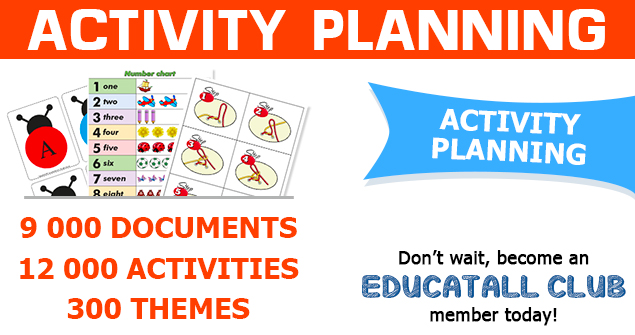Managing conflicts
Our profession leads us to play many different roles such as animator, confidante, mediator, and sometimes even clown.
They are each as important as the next and, depending on the personalities of those involved, everyone has a role they prefer. Personally, I find being a mediator difficult. Unfortunately, it is a role which occupies much of my time and energy. Many conflicts arise between children throughout the course of a day.
We manage conflicts to the best of our knowledge. However, there are certain factors which can limit our capacity to react appropriately such as timing or the limits of our patience. We would love to eliminate these factors but doing so is practically impossible. Conflicts provide great learning opportunities for children. Through conflicts, they can learn certain abilities which will be precious tools throughout their lives. Unfortunately, the conflict resolution process is complicated. Mastering it takes time.
Educatall created a fantastic tool: The problem solving rainbow. This tool is available in the Educatall Club. Here is a brief explanation along with a few ideas of how this tool may be helpful.
How to use the Problem solving rainbow:
1. Circle time is ideal for presenting this new tool. Ask children how they feel when they are faced with a conflict.
- Why do they have disagreements?
- What is the proper way to react?
- How can we help a friend who is sad smile again?
2. Use simple words and discuss situations children are familiar with. Ask open questions which will make them think. Make sure they have sufficient time to respond. Present the rainbow as something new, conceived for them, to help make their daily life easier. It's a reminder of how they should react when a conflict arises. Once your presentation is complete, explain each step. Show them that each step is important. Give precise explanations with concrete examples from day to day daycare life.
3. Depending on the age of your group, the discussion may be divided into two parts to give them a chance to absorb the information. Using a puppet, specifically for problem solving, can capture children's attention and help them understand your message. Use the same puppet for reminders whenever necessary. This method makes the tool accessible for little ones. Display the rainbow at children's eye level in a special place. Glue it onto a large piece of cardboard and decorate with stickers, arrows, etc. Make it attractive for children. Choose a secret code or a signal which will indicate that a child needs to refer to the rainbow.
4. Make copies of the rainbow and give them to parents along with instructions. Explain why it is used, how it is used, and its importance.
How to act throughout the problem solving steps:
- Step 1: "I stop, I step away" For this step, if you must intervene, your attention must be directed towards the victim. Sometimes children are equally involved in the conflict, invite them to refer to the rainbow.
- Step 2: "I calm down, I breathe" This is of utmost importance. Children who learn to discuss a problem calmly will greatly benefit from this step. Reserve a quiet, inviting corner where a child will want to go to in order to calm down.
- Step 3: "I listen to my friend, I think" This step is very demanding for children. Thinking about the situation which occurred requires quite an effort. To begin, ask them questions which will make them think but avoid thinking for them. Remember, your role is simply to guide children.
- Step 4: "I explain, I talk about it" It is very challenging for children to listen to each other. Often, they have many things to say about the situation and find it difficult to wait for their turn to speak. Avoid speaking. Use sign language to help them know whose turn it is to speak. You may also make a "speaking stick" with the group. This stick can be used for this step. The child holding the stick is allowed to speak. When he is done speaking, he hands it to the other child who then gets a chance to explain his point of view. It is important that you develop tricks to intervene as little as possible while ensuring the tool is put to good use.
- Step 5: "I find a solution, I apologize, I fix it" Give children time to find their own solutions. Ask open questions but avoid suggestions. You may help them find ideas using a visual support. For example, you may prepare a poster displaying several different solutions such as sharing, playing together, taking turns, a kind gesture...
Sonia Leclerc
Daycare worker
No element of this text may be copied,
reproduced, distributed, published, translated, downloaded, posted, or
transmitted, in any way, without prior written authorization from
Educatall and the copyright holder. Elements may be posted and/or
downloaded solely for personal and non-commercial use provided no
modifications are made and all notices of intellectual property are
fully shown (name of the author, title of the article, name of the
website, date the text is used and the date of the part in question).

 Home
Home Theme activities
Theme activities
 Babies and toddlers
Babies and toddlers
 Arts and crafts
Arts and crafts
 Science
Science
 Creative recipes
Creative recipes
 Tips and tricks
Tips and tricks
 Special needs
Special needs
 Extra activities
Extra activities
 Educ-TV
Educ-TV
 Newsletter
Newsletter  Online store
Online store Educatall club
Educatall club

